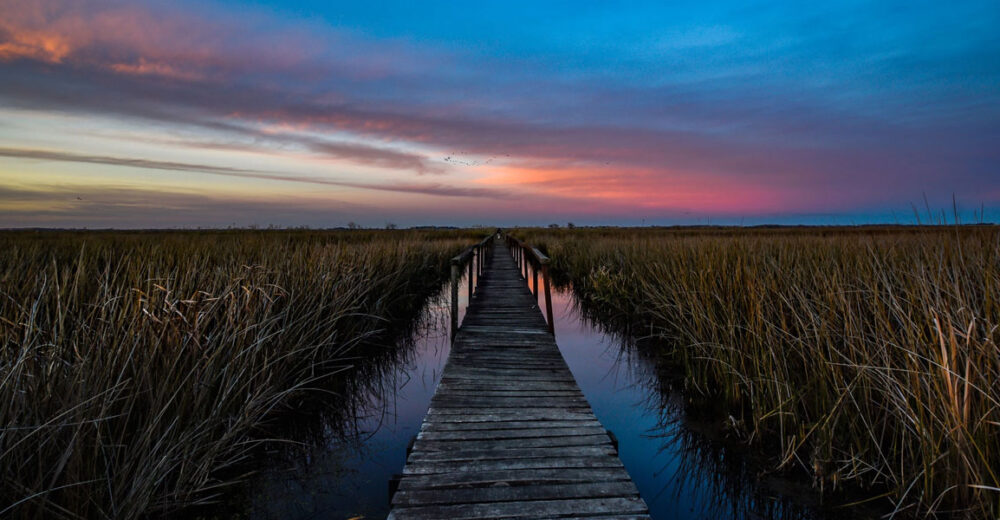Swamp Deer National Park, all the information about one of the Nature Reserves closest to the center of the City.
It is located in the town of Campana, just an hour from downtown, with many attractions for you to enjoy!
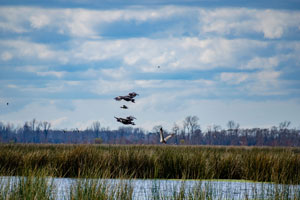 As we tell you in this note, there are many areas where you can escape a bit from the hustle and bustle of downtown Buenos Aires. Among the thousands of activities that this beautiful city has, green spaces are one of the most sought after attractions to breathe some fresh air and enjoy nature.
As we tell you in this note, there are many areas where you can escape a bit from the hustle and bustle of downtown Buenos Aires. Among the thousands of activities that this beautiful city has, green spaces are one of the most sought after attractions to breathe some fresh air and enjoy nature.
This Park was originated on the basis of the Otamendi Nature Reserve, created in 1990. It is a space recognized as an Area of great importance for the conservation of Birds.
It is a protected natural area that was created in 2018, administered by National Parks. It has approximately a little more than 5 thousand hectares and protects 3 ecoregions: Delta of Paraná, La Pampa and El Espinal.
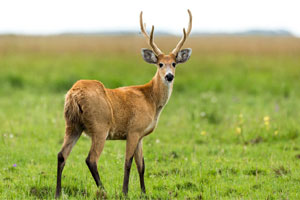 Its name is due to the traditional Swamp Deer, a species of deer that is known to be the largest that inhabits South America. Possibly, you are lucky enough to see it in the vicinity of the park, which is in favor of its protection, since it is in danger of extinction. This park is home to the southernmost population of this species.
Its name is due to the traditional Swamp Deer, a species of deer that is known to be the largest that inhabits South America. Possibly, you are lucky enough to see it in the vicinity of the park, which is in favor of its protection, since it is in danger of extinction. This park is home to the southernmost population of this species.
Here, you will find a huge variety of specimens of nature such as nutria, wild cats, capybaras, river otters and approximately 240 species of birds! Among the plants that this site houses, you will see huge flechillas, cortaderas, totoras and serruchetas. In turn, felling forests are formed in the ravine, which are neighbors of the espinillo, sauco and ombú. In the lagoon, you will see several species of coots, sandpipers and ducks, in addition to the gliding hawk and the yellow breasted. Under the water, you will find fish such as mojarras, catfish and tarariras. Among the insects, spiders, ants, cicadas and butterflies of beautiful colors stand out.
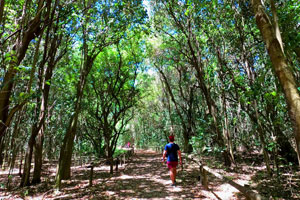 The climate of this area is rather humid temperate, due to the influence of the Río de la Plata. Temperatures vary from 10°C to a maximum of 24°C, depending on the season of the year in which you visit the space. Between the months of May to November, some frosts can occur.
The climate of this area is rather humid temperate, due to the influence of the Río de la Plata. Temperatures vary from 10°C to a maximum of 24°C, depending on the season of the year in which you visit the space. Between the months of May to November, some frosts can occur.
It has 1500 meters of trails that reach a panoramic viewpoint from where you can see the entire wetland. Along the paths, you will see some signs so that you know the history of the place and the importance of wetlands in the region. When you return from the trails, you will see a vacant lot where there were clearings and a “Nature Working” sign, which indicates that the site is undergoing natural recovery, without intervention.
In turn, you will arrive at the Native Trees nursery, where you can visit and learn about the process of development and cultivation of different species of native trees. In addition, there is a picnic area to sit down for lunch. Obviously, you will have to bring food, since the park does not have premises for this purpose.
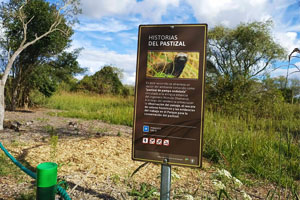 The importance of wetlands is a concept that you will see recurring in this Park, given its fragility and the importance of its preservation. The National Park works hard, not only in its protection, but also in education to expand knowledge about its care, so it invites visitors to continue learning about ecosystem services and ecosystems. For this same reason, the Park was recognized as a Ramsar Site, a classification that gives international importance to wetlands.
The importance of wetlands is a concept that you will see recurring in this Park, given its fragility and the importance of its preservation. The National Park works hard, not only in its protection, but also in education to expand knowledge about its care, so it invites visitors to continue learning about ecosystem services and ecosystems. For this same reason, the Park was recognized as a Ramsar Site, a classification that gives international importance to wetlands.
To get to this Park, you can go by car through National Route 9 (Pan-American Highway, Ramal Campana), getting off at Otamendi and traveling 1km along Cordero street to the park entrance. By bus, you can take the services provided by Chevallier from Once to Zárate or on the Mitre Train, getting off at the Otamendi station from Retiro and changing at Ballester to take the train to Zárate.
Undoubtedly, it is an excellent plan to enjoy a day immersed in Nature, to live a different experience and continue learning to take care of our ecosystem. We leave you their profile here for more information.
Here we leave you other options of Parks and Natural Reserves, to enjoy the fresh air in the city!
We invite you to join our Free Tours of Buenos Aires here, to continue learning much more about this beautiful city.
